Welcome to The Zone! This article is Part 12 in the GardenTabs Zone Series, where we look at all USDA Plant Hardiness Zones and recommend the top 17 plants for your region.
Zone 6b
Zone 6b experiences average minimum temperatures ranging from -5 to 0 °F (-20.6 to -17.8 °C), offering a delightful balance of moderate winters and warm summers.
Join us as we discover the 17 best plants that can thrive in Zone 6b, adding beauty, color, and vitality to your garden.
Zone 6b encompasses regions in North America, including parts of the United States, such as the Pacific Northwest, the Midwest, parts of the Northeast, and the mountainous areas of the West.
It is also found in certain areas of Europe, including parts of the United Kingdom and Central Europe.
These regions are characterized by mild to moderately cold winters, warm summers, and a growing season that typically lasts from spring to fall.
Here are 17 of the Best Plants to Grow in Zone 6b
1. Hydrangea (Hydrangea spp.)
Hydrangeas offer stunning blooms and are a favorite in many gardens. Varieties such as the Endless Summer or the Annabelle Hydrangea can tolerate temperatures as low as -5 °F (-20.6 °C) in Zone 6b.

These beautiful shrubs thrive in partial shade to full sun and provide a showy display of flowers.
2. Coneflower (Echinacea spp.)
Coneflowers are hardy perennials that thrive in Zone 6b gardens. Their daisy-like blooms in pink, purple, and white shades add vibrancy and attract pollinators.
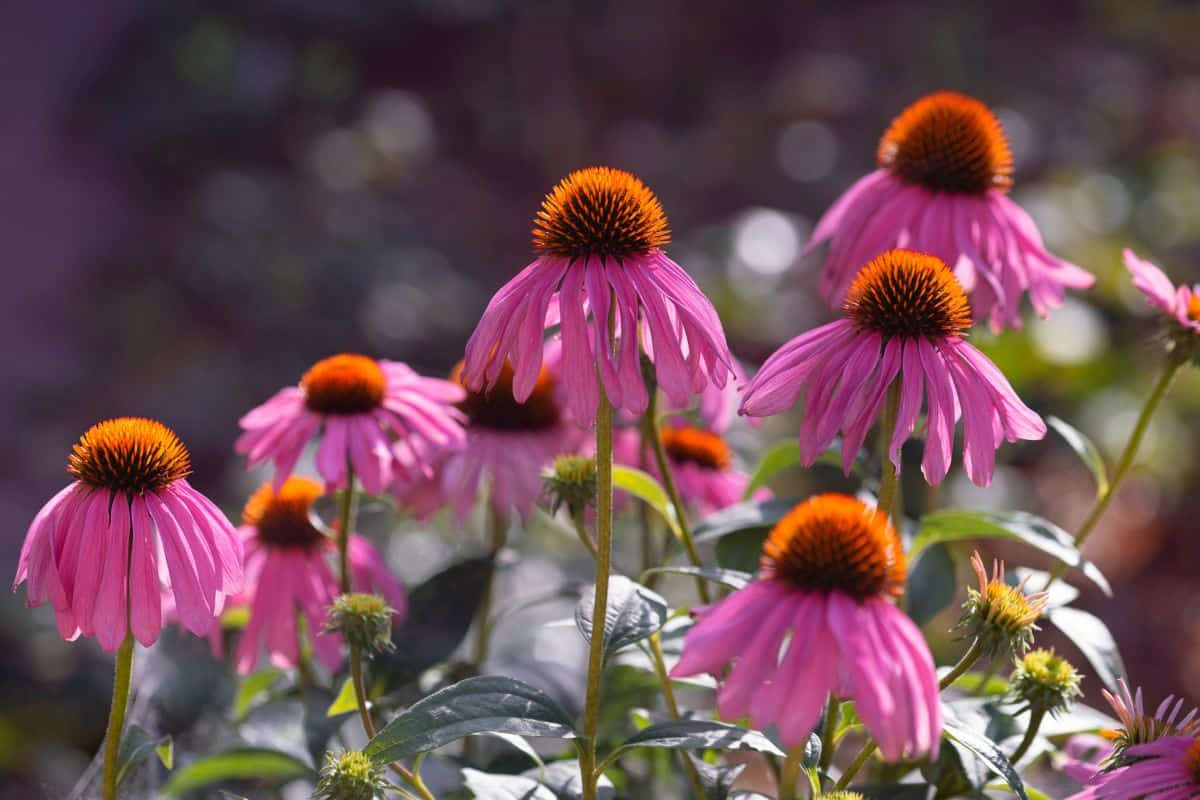
Coneflowers can withstand temperatures as low as -5 °F (-20.6 °C) and are well-suited for full sun locations.
3. Black-Eyed Susan (Rudbeckia hirta)
The cheerful and low-maintenance Black-Eyed Susan brightens up Zone 6b gardens with its golden-yellow petals and dark centers.

This perennial plant can tolerate temperatures as low as -5 °F (-20.6 °C) and thrives in full sun, adding a touch of warmth and charm.
4. Russian Sage (Perovskia atriplicifolia)
Russian Sage is a drought-tolerant perennial in Zone 6b's climate. Its wispy, silver foliage and lavender-blue blooms add an enchanting touch to the garden.
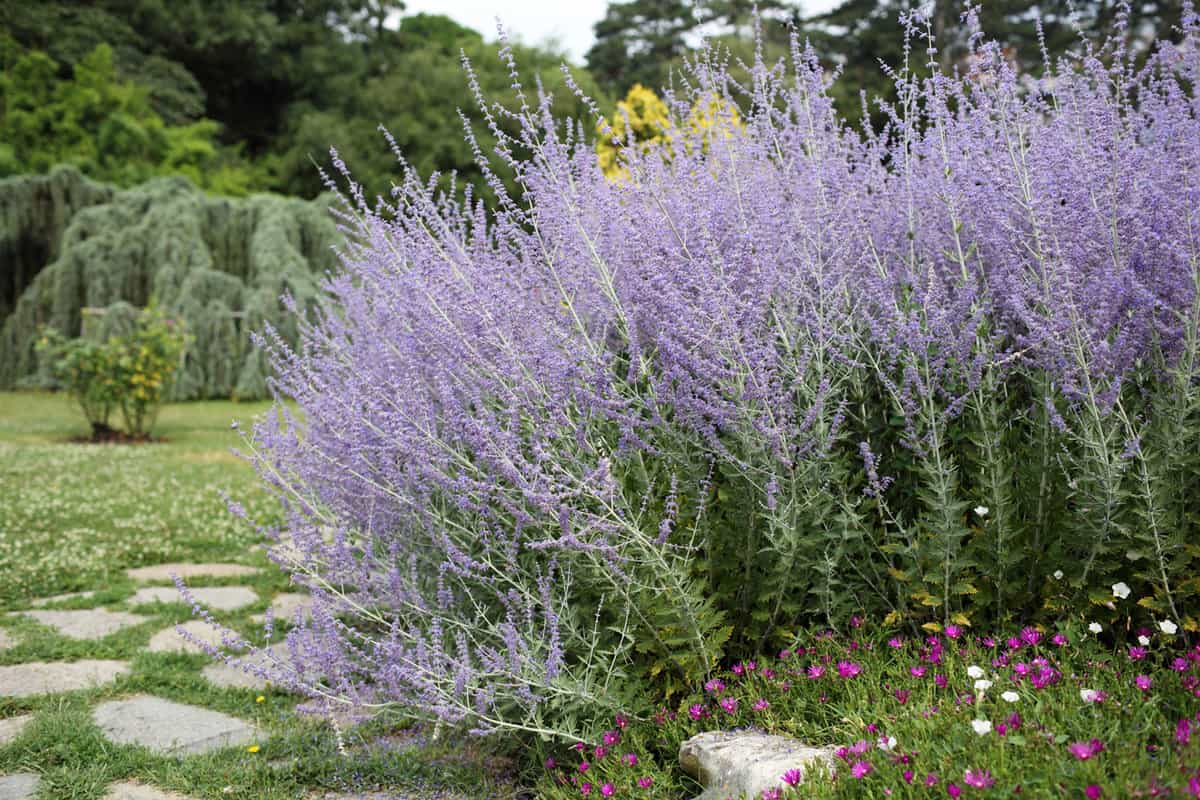
Russian Sage can withstand temperatures as low as -5 °F (-20.6 °C) and prefers full sun.
5. Japanese Maple (Acer palmatum)
Japanese Maples are prized for their stunning foliage and graceful form. These trees thrive in Zone 6b and can tolerate temperatures as low as 0 °F (-17.8 °C).
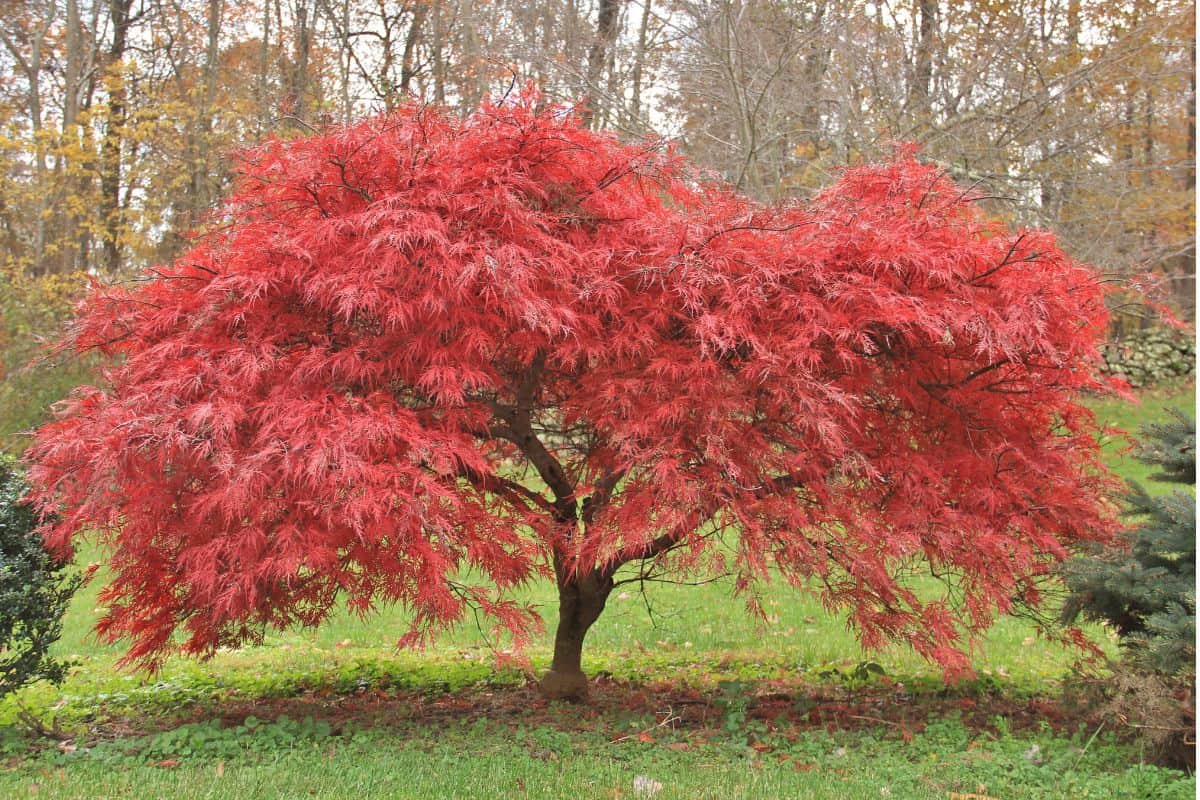
With their vibrant colors and unique leaf shapes, Japanese Maples bring elegance to any landscape.
6. Hosta (Hosta spp.)
Hostas are beloved for their lush foliage and ability to thrive in the shade. These perennials come in various sizes and colors, adding texture and beauty to Zone 6b gardens.
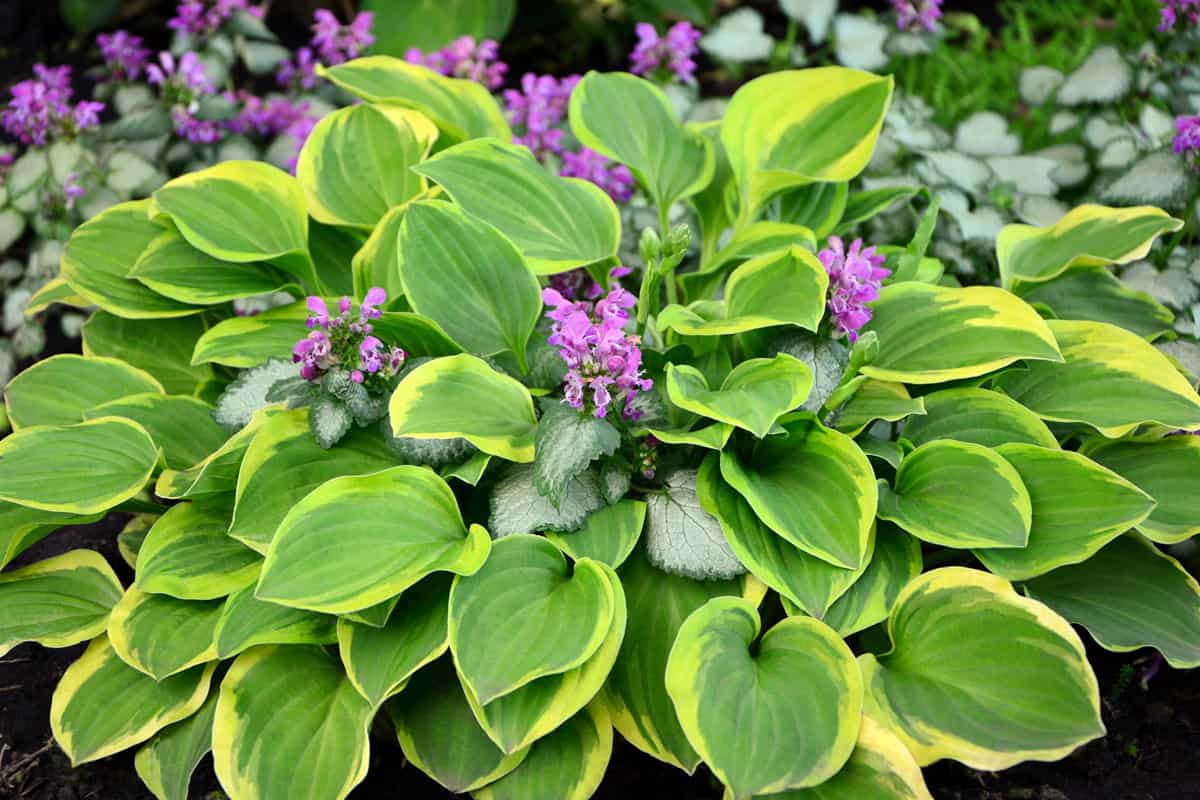
They can tolerate temperatures down to -5 °F (-20.6 °C) and are excellent for shady areas.
7. Daylily (Hemerocallis spp.)
They are known for their stunning blooms and hardiness in shady areas.
![A close up photo of daylily on a sunny day, Do Deer Eat Daylilies? [And How To Prevent That]](https://gardentabs.com/wp-content/uploads/2020/09/A-close-up-photo-of-daylily-on-a-sunny-day.jpg)
Japanese Painted Fern can tolerate temperatures as low as -5 °F (-20.6 °C) and thrives in moist, well-drained soil in partial to full shade.
8. Bleeding Heart (Dicentra spectabilis)
Bleeding Heart is a classic perennial known for its heart-shaped pink or white flowers that dangle from arching stems. It brings a touch of romance and charm to Zone 6b gardens.

Bleeding Heart can tolerate temperatures as low as -5 °F (-20.6 °C) and prefers partial shade and rich, well-drained soil.
9. Hellebore (Helleborus spp.)
Hellebores, known as Lenten Roses, are early-blooming perennials that brighten Zone 6b gardens. Their nodding flowers in shades of white, pink, purple, and green add a pop of color to the late winter and early spring landscape.
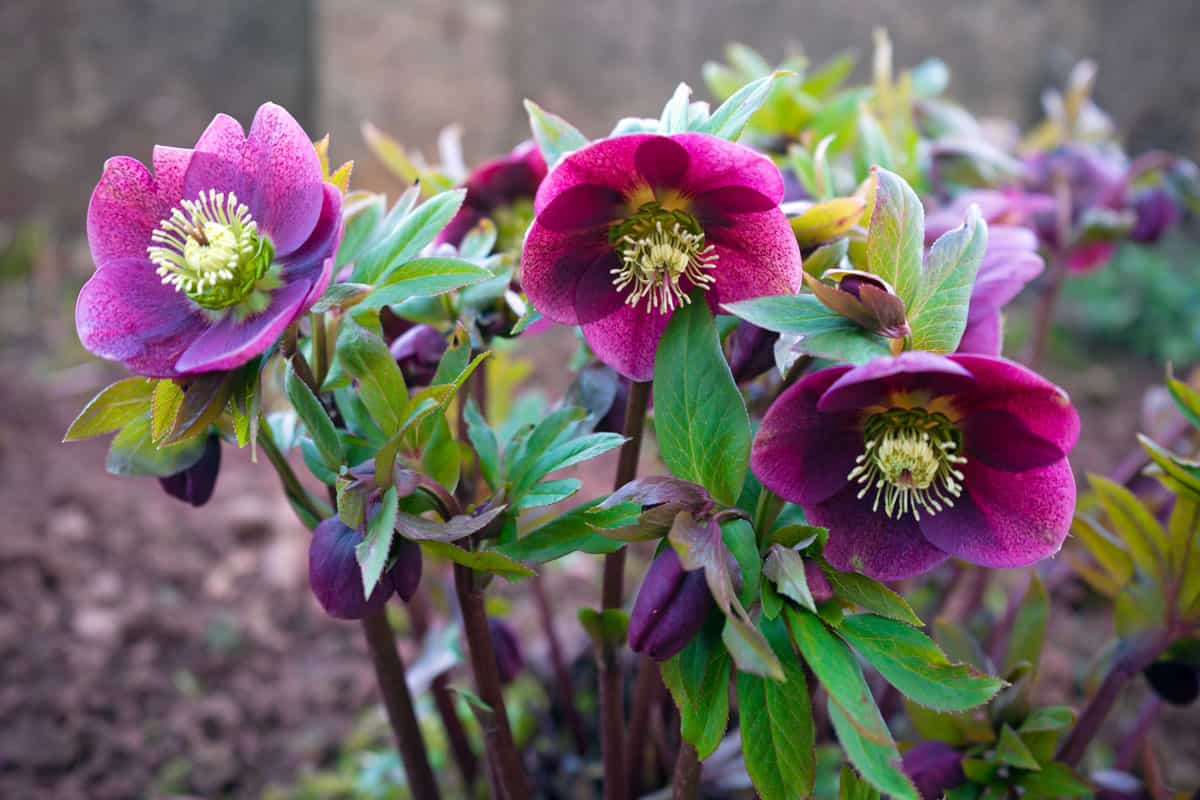
Hellebores can withstand temperatures as low as -5 °F (-20.6 °C) and prefer partial shade.
10. Japanese Forest Grass (Hakonechloa macra)
Japanese Forest Grass is a graceful and low-growing ornamental grass that brings texture and movement to Zone 6b gardens.
Its cascading foliage in shades of green or variegated patterns creates a soothing and tranquil atmosphere.
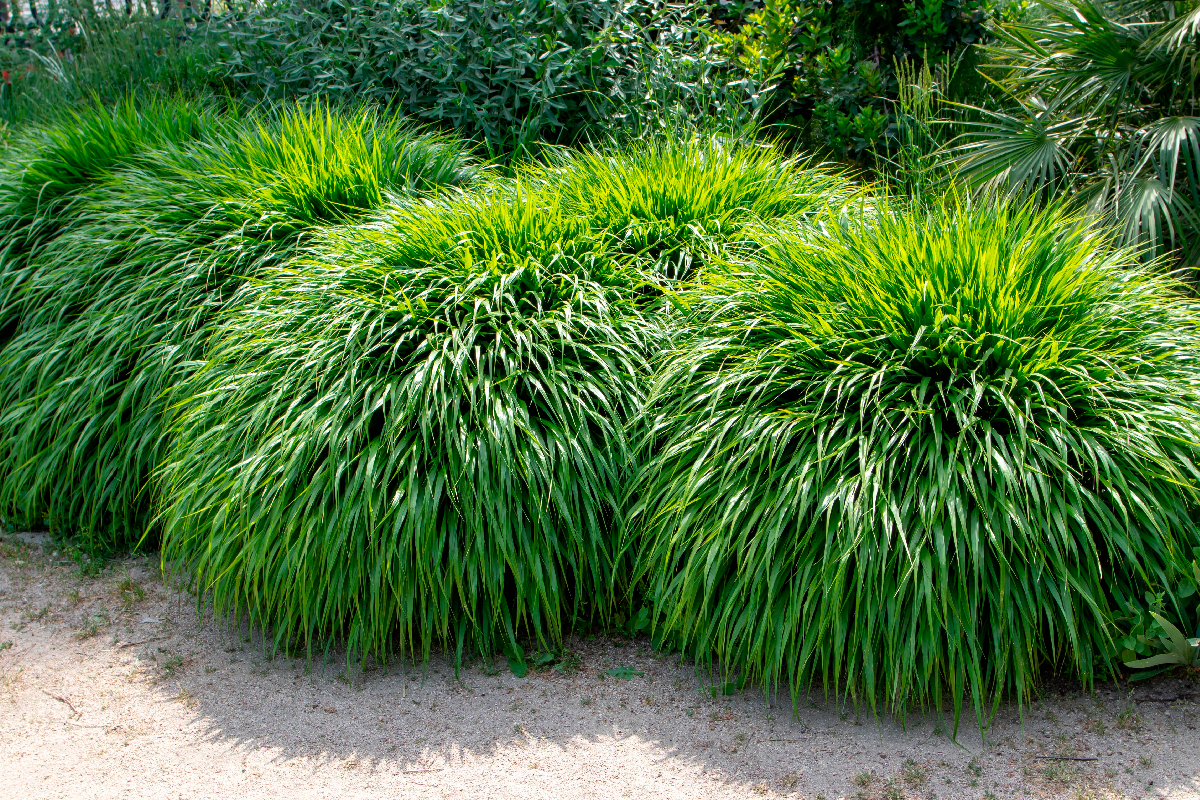
Japanese Forest Grass can tolerate temperatures as low as -5 °F (-20.6 °C) and thrives from partial to full shade.
11. Astilbe (Astilbe spp.)
Astilbe is a popular choice for adding softness and elegance to Zone 6b gardens. They create a charming and romantic display with their feathery plumes in shades of pink, white, and red.

Astilbes can tolerate temperatures as low as -5 °F (-20.6 °C) and prefer partial shade and moist, well-drained soil.
12. Coral Bells (Heuchera spp.)
Coral Bells are prized for their attractive foliage in various colors, including shades of green, purple, bronze, and silver. They add visual interest and texture to Zone 6b gardens.
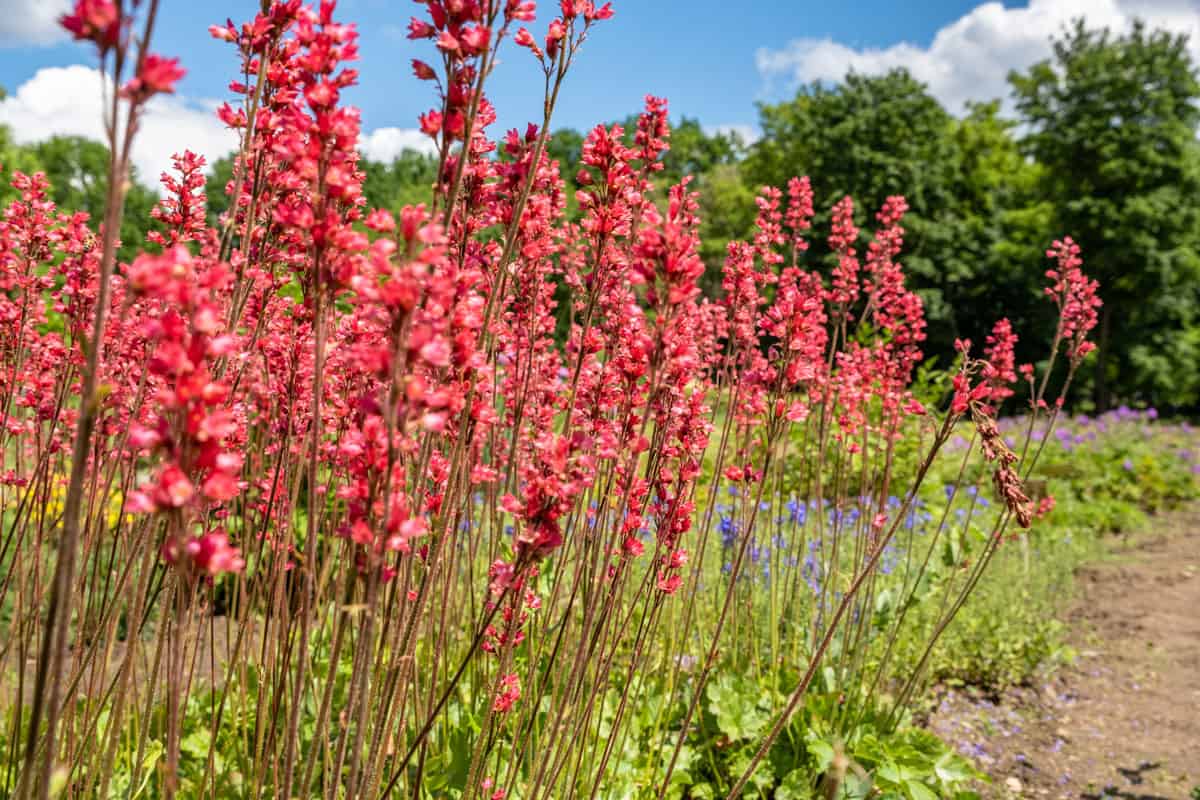
Coral Bells can tolerate temperatures as low as -5 °F (-20.6 °C) and prefer partial shade and well-drained soil.
13. Sedum (Sedum spp.)
Sedums, also known as Stonecrops, are hardy succulent plants that thrive in Zone 6b gardens. Their fleshy leaves and clusters of star-shaped flowers in shades of pink, white, or yellow provide a unique and drought-tolerant option.
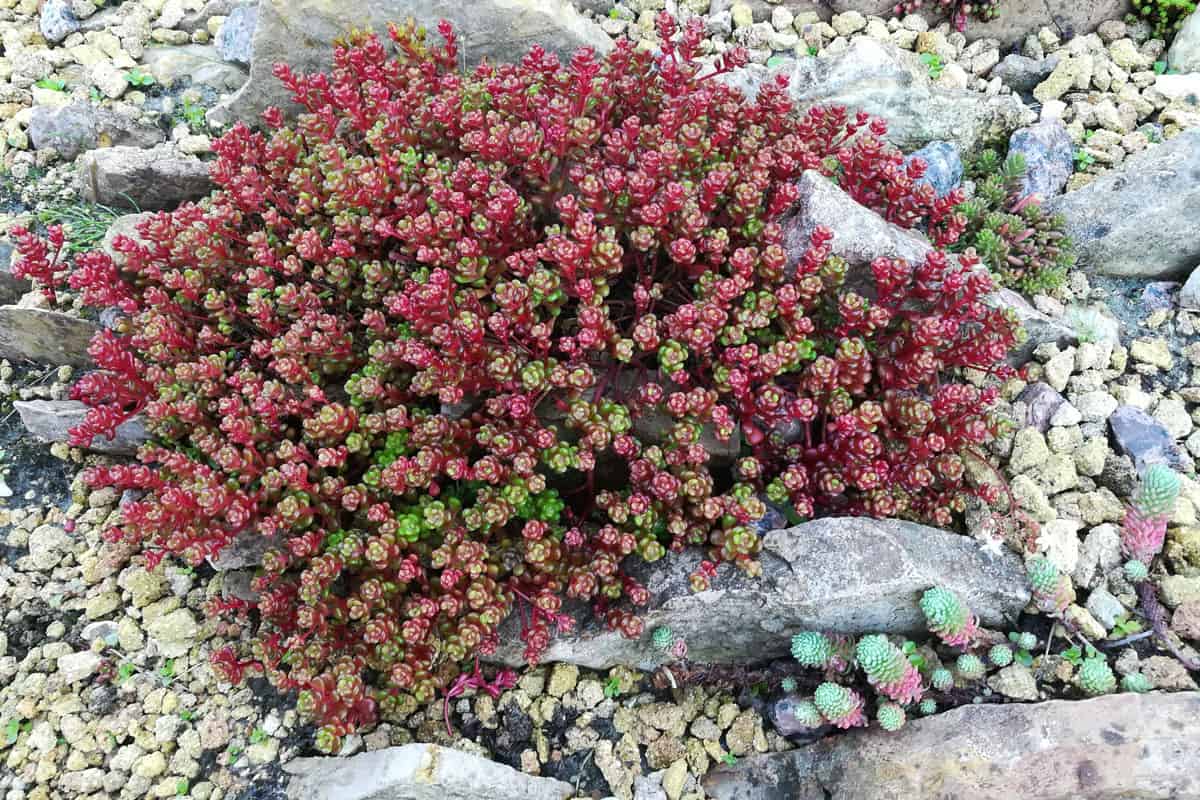
Sedums can tolerate temperatures as low as -5 °F (-20.6 °C) and prefer full sun and well-drained soil.
14. Yarrow (Achillea spp.)
Yarrow is a versatile and easy-to-grow perennial that adds color to Zone 6b gardens. Its flat-topped clusters of flowers in shades of pink, red, yellow, or white attracts pollinators and adds a cottage garden charm.
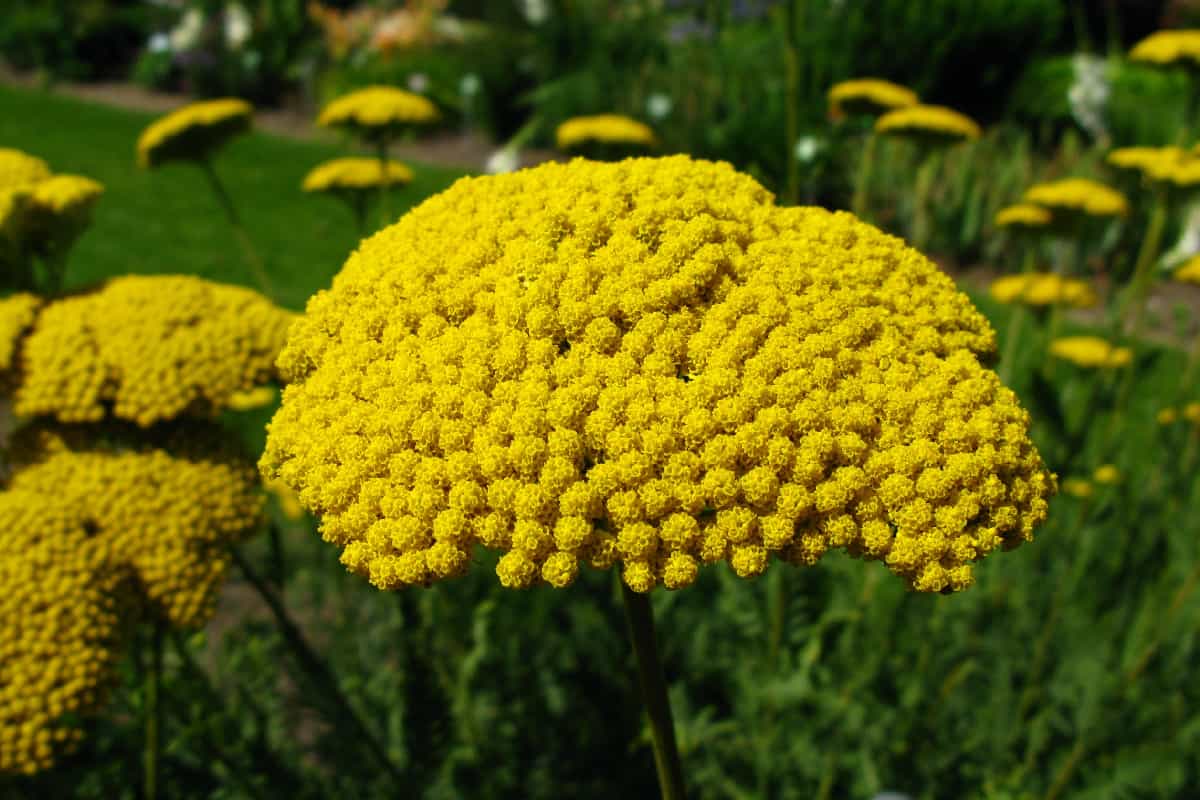
Yarrow can tolerate temperatures as low as -5 °F (-20.6 °C) and prefers full sun and well-drained soil.
15. Russian Olive (Elaeagnus angustifolia)
Russian Olive is a hardy deciduous tree that thrives in the challenging conditions of Zone 6b. With its silver-gray foliage and small yellow flowers, it adds beauty and resilience to the landscape.
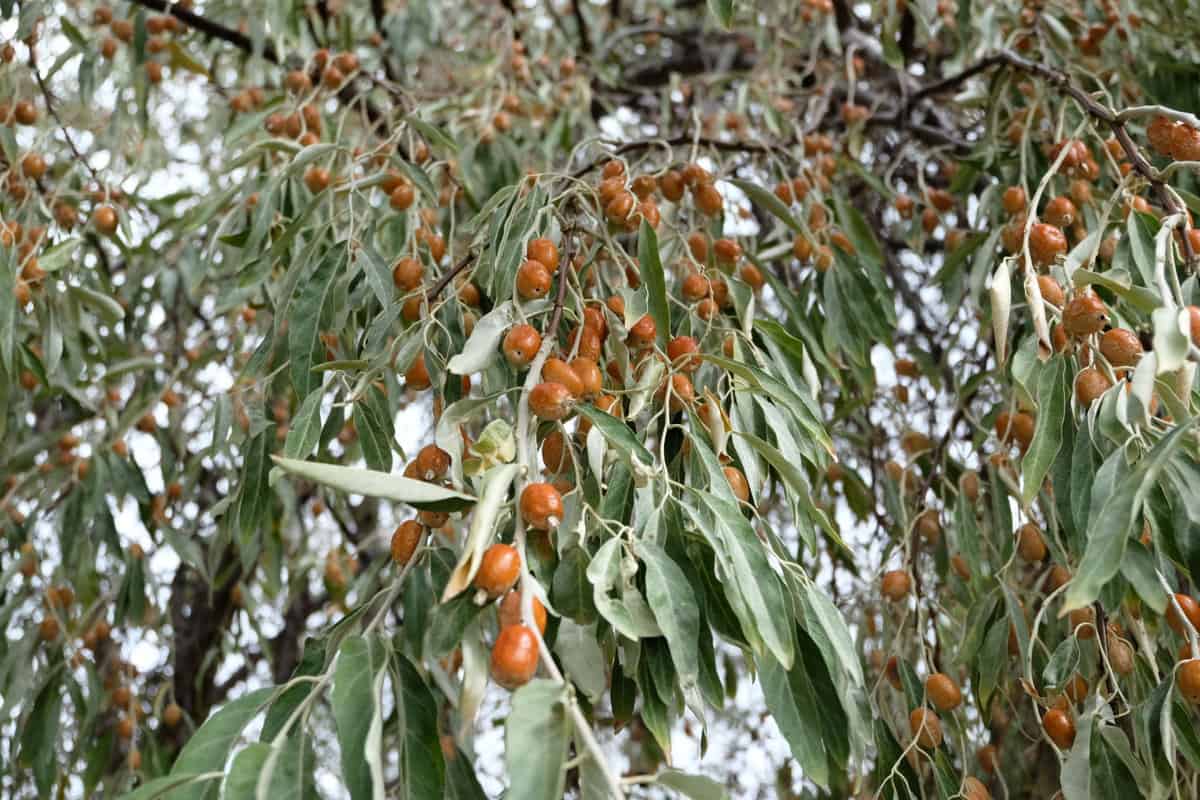
Russian Olive can tolerate temperatures as low as 0 °F (-17.8 °C) and prefers full sun and well-drained soil.
16. Mexican Feather Grass (Nassella or Stipa spp.)
Mexican Feather Grass is an ornamental grass known for its delicate and airy appearance. With its slender green blades that sway gracefully in the breeze, it brings movement and elegance to Zone 6b gardens.
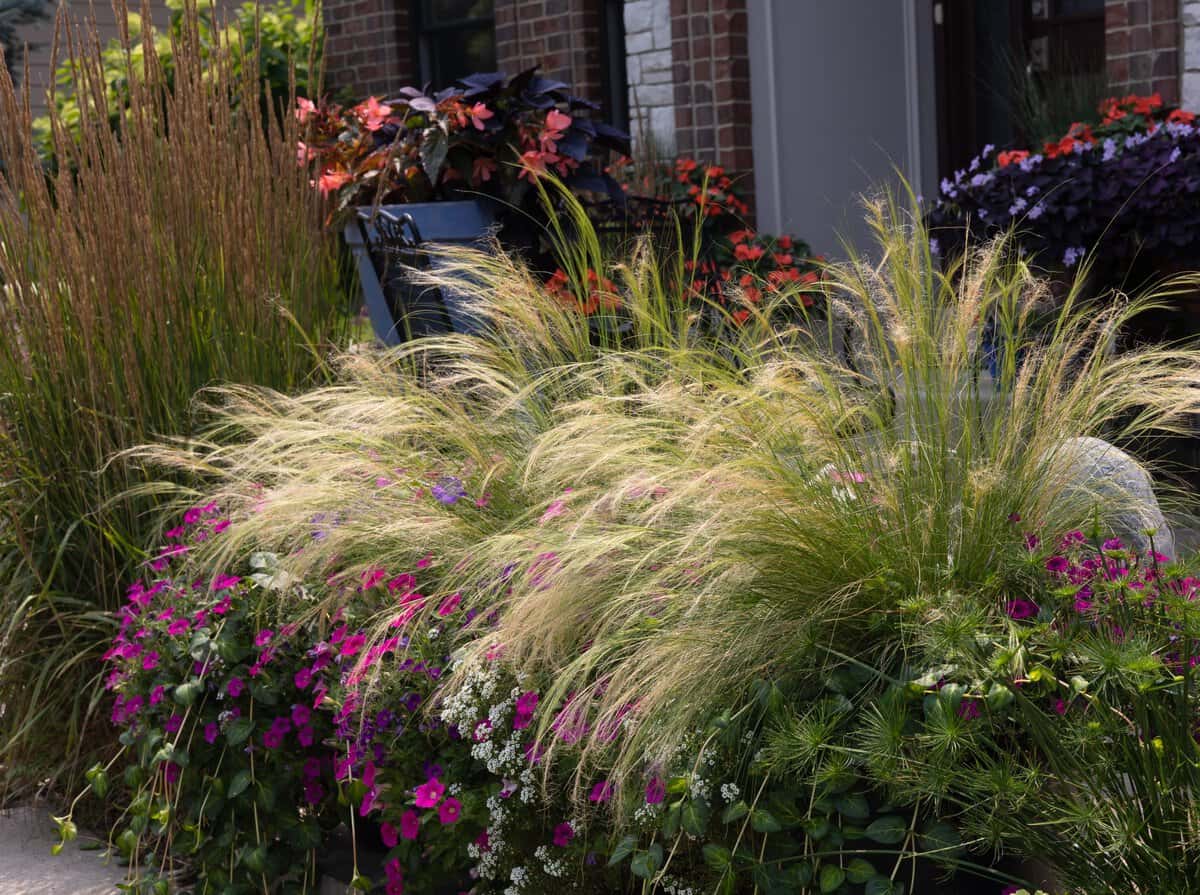
Mexican Feather Grass can tolerate temperatures as low as 0 °F (-17.8 °C) and thrives in full sun and well-drained soil.
17. Bee Balm (Monarda spp.)
Bee Balm is a beautiful, pollinator-friendly perennial that colors Zone 6b gardens. Its vibrant, tubular flowers in shades of pink, red, purple, and white attract bees, butterflies, and hummingbirds.
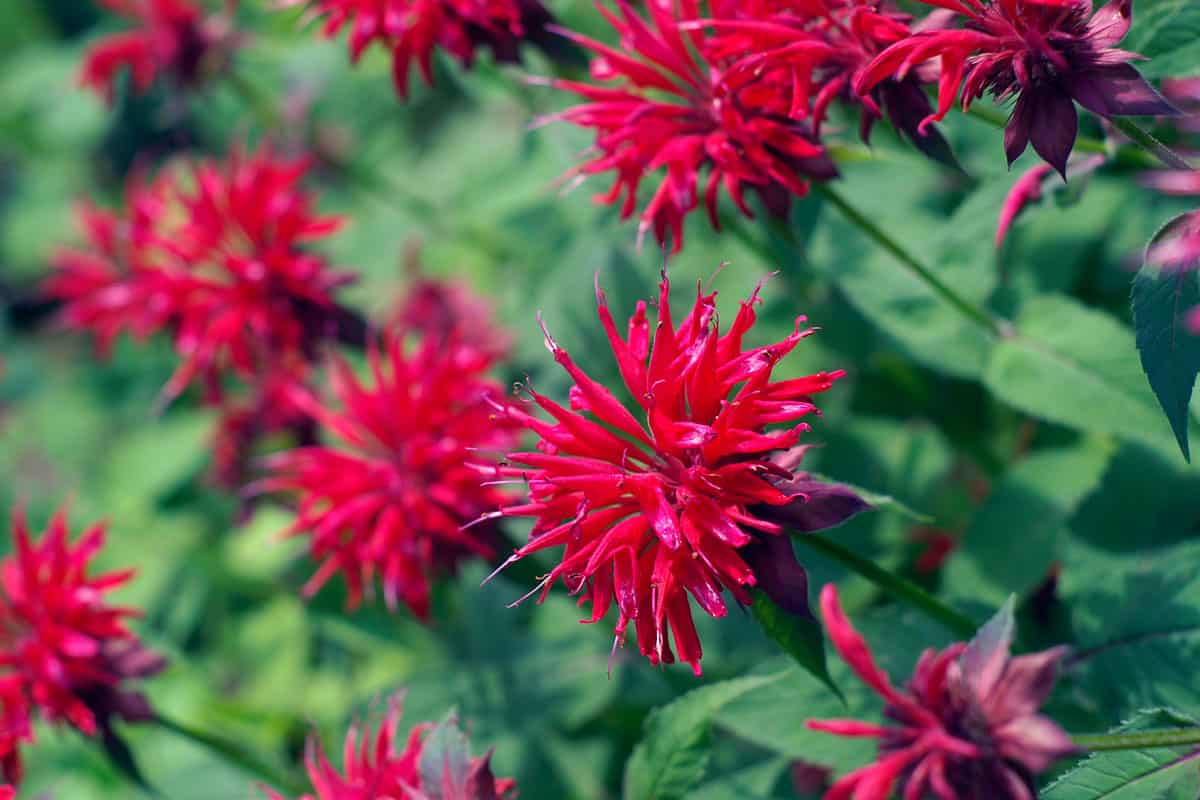
Bee Balm can tolerate temperatures as low as -5 °F (-20.6 °C) and prefers full sun to partial shade and moist, well-drained soil.
Want to read more? We’re here for you:
16 Zone 6 Perennials That Are Full Sun And Drought Tolerant
When To Plant Fruit Trees In Zone 6?
Zone 6 Flowers To Plant In Fall [14 Suggestions To Beautify Your Landscaping]
Embrace the Charm
Zone 6b offers a moderate climate for gardening, with mild winters and warm summers. By selecting the right plants, you can create a thriving and visually appealing garden that embraces the beauty of this zone.
From the elegant Hydrangeas and Coneflowers to the hardy Hostas and Coral Bells, these plants add color, texture, and fragrance to your landscape.
When choosing plants for your Zone 6b garden, consider their specific requirements, including sunlight, soil conditions, and water needs.
Embrace the beauty of Zone 6b and let your garden thrive with these wonderful plant selections.
